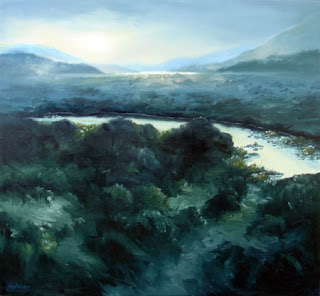1. The enlightenment period is typically believed to have taken place during the 18th century. ‘Enlighten’ means to give intellectual or spiritual light to or to shed light upon. Hence the enlightenment takes its name from the people who wanted to contribute to a brighter future and society. The enlightenment was based in France, and lead by a group of intellectuals; philosophers and professors. This intellectual movement is often described as a paradigm of new ideologies which were based around the prospect that the human condition could be improved by utilizing scientific facts and reason. A new consideration for individual human welfare was also a significant part of enlightenment thinking, a focus on toleration, individualism, and freedom gave the people freedom to exercise their personal reason and rationality free from religious orthodoxies (also known as secularism). The rapid pace of developments in the areas of social science and studies of the natural world can be accounted to way that the ideologies of reason, rationality, science, empiricism, universalism, secularism and progress all acted as enablers and catalysts for each other. For example secularism allowed man to view the world as more of a machine which operated based on facts which could be calculated. The application of rational thinking allowed man to document a set of rules and laws which universally applied to all things in nature.2. The ‘sublime’ concept (first defined by Edmund Burke in 1756) holds that life spirit is dependant on its harmony with nature’s terrific ness, power, grandeur, vastness and incomprehensibility. According to Dr. Stephen Prickett (2007) the sublime is marked by the power to cause an intense pleasure over the observer, a pleasure that has transcendent qualities. The concept is strongly connected to landscape which is apparent in many works produced as the time which include overwhelming, wild landscapes, evoking pleasure in the observer as described above. For example the painting below by Turner (1842) titled Snow storm- Boat off a Harbour’s Mouth illustrates idea of the sublime as an overpowering force, in this case a storm that cannot be rationally or wholly grasped. The concept of the sublime contrasted the scientific empiricism of the enlightenment as it demonstrated (through art as a medium) that not all nature could be measured or contained within human understanding.

Snow Storm- Boat off a Harbour's Mouth (1842)
J.M.W. Turner
3. The intellectual movement of secularism (one concept that came from the enlightenment) enabled a shift in focus from religious paintings to works that depicted the vastness and beauty of nature. Previously in the 18th century the ranking of landscape painting as an intellectual medium was low, however when religious control subsided due to a new interest in the natural world I suspect artists experienced the sublime quality of nature and landscapes, conveyed this through paintings and the sublime became popular due to its mystery. The allure of untamed wilderness must have been very appealing to the enlightenment man because it’s so strongly contrasted the pretence that man could gain control of nature through science.
4. Richard Misrach’s work can be described as modern day sublime photography. He uses vast open landscapes ranging from dry textures grasses and sands to luscious and furious ocean. He typically has one or more figures in the shot, emphasizing the relationship and scale between man and the natural world. He appears to favor high bird’s eye view angles and distant angles which allow a generous proportion of the landscape into the frame. Some of Misrach’s images have a tranquil aesthetic value- conforming to the ‘transcending pleasure’ encountered by many early 18th century sublime paintings. However some of his images are thought provoking, shocking, unsettling. These types of images are more accurately described by the quote below sourced from corehound.wordpress.com
Whatever is fitted in any sort to excite the ideas of pain and danger, that is to say, whatever is in any sort terrible, or is conversant about terrible objects, or operates in a manner analogous to terror, is a source of the sublime; that is, it is productive of the strongest emotion which the mind is capable of feeling- corehound (2010).




5. Other artists’ whose work reflects themes from the sublime:
David McCracken- contemporary spatial
-‘drop in the ocean’
-‘mainland’

Anish Kapoor- contemporary spatial
-‘cloud gate’ (1995)
-‘sky’

Christo- contemporary spatial
-‘running fence’

Kerry Martin- contemporary oil painting
-‘morning drift 2’ (2007)
-‘chasing shadows’ (2006)
Frederick Edwin Church- Enlightenment sublime landscape painting
-‘Dämmerung in der Wildnis’ (1860)
-‘the Natural Bridge’ (1852)
6. Misrach’s work appeals strongly to me because it causes me to adopt an awareness of my own insignificance in the world, but in a very peaceful harmonious manner. I think many of the landscapes in his work look surreal and magnificent, which creates a sense of awe. One particular photograph appeals strongly to me in an emotional sense; it was taken in 2005 and is Untitled #696-05.
The image (below) is of a couple on the beach in an intimate embrace sharing a kiss. The image is clever because it keeps the viewer at a distance while letting us see the relationship between the two people. The beach is completely barren which emphasizes both the isolation of the couple and also intimacy. I think it’s a gorgeous captured scenario.

Information sourced from:
http://corehound.wordpress.com/
http://www.scribd.com/doc/6827/The-Sublime
http://artandperception.com/2007/07/wanderer-in-a-sea-of-foggy-ideas.html
images sourced from:
http://www.orbit.zkm.de/?q=node/143
http://chinachapter.blogspot.com/2006/12/early-tuesday-morning-my-sister-and-i.html
http://butlersheetmetal.com/tinbasherblog/images/steel_buildings_cloudgate.jpg
http://www.flickr.com/photos/94981824@N00/4300691
http://www.tate.org.uk/britain/exhibitions/apictureofbritain/images/home_front/turner_snowstorm.jpg
http://faculty.evansville.edu/rl29/art105/img/christo_runningfence.jpg
http://www.mocp.org/collections/permanent/uploads/Misrach1994_21.jpg
http://corehound.files.wordpress.com/2010/03/richardmisrach1.jpg
http://www.robertmann.com/artists/misrach/images/f_misrach13235.jpg
http://www.evabreuerartdealer.com.au/martin.html
http://commons.wikimedia.org/wiki/File:Frederick_Edwin_Church_001.jpg
http://freepages.genealogy.rootsweb.ancestry.com/~silversmiths/makers/silversmiths/47553.htm
http://www.aperture.org/exposures/wp-content/uploads/2008/05/couple.jpg




























